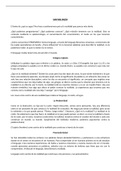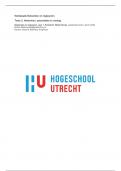Samenvatting
Summary Chapter 8 Thinking, Language, and Intelligence
- Instelling
- Rijksuniversiteit Groningen (RuG)
Detailed summary of Chapter 8: Thinking, Language, and Intelligence, in Michael Gazzaniga's 'Pscyhological Science' fifth edition.
[Meer zien]














